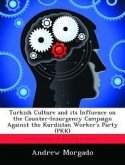To address the potential terrorist threats to America, the National Security Strategy of theUnited States and the National Strategy for Combating Terrorism state the US will wage a "warof ideas". A goal of the "war of ideas" is to change the minds of varying ideologicalpopulations. A war fought in the minds and among people: human terrain: requires humanplayers to engage and communicate with indigenous populations, in the context of the localculture.As the US and its coalition partners in the Global War on Terrorism (GWOT) clear al-Qaeda from one location, the terrorists will seek another. They will target people to turn them,passively and actively, against the US and the "coalition of the willing." A foreign or localgovernment can only win the "war of ideas" and defeat global terrorists if it wins the "hearts andminds" of the people, which requires influencing their behavior by offering them a bettersolution than al-Qaeda offers. A "war of ideas" is not new to the 21st century.While history cannot provide a panacea, today's military can learn lessons from historicalsmall wars and low-intensity conflicts to train and employ forces effectively to wage and win a"war of ideas" to counter global insurgents and their ability to win popular support. This paperemploys a review of two case studies, Malaya (1945 - 1960) and Vietnam (1964 - 1972), toilluminate the point.
Hinweis: Dieser Artikel kann nur an eine deutsche Lieferadresse ausgeliefert werden.
Hinweis: Dieser Artikel kann nur an eine deutsche Lieferadresse ausgeliefert werden.








